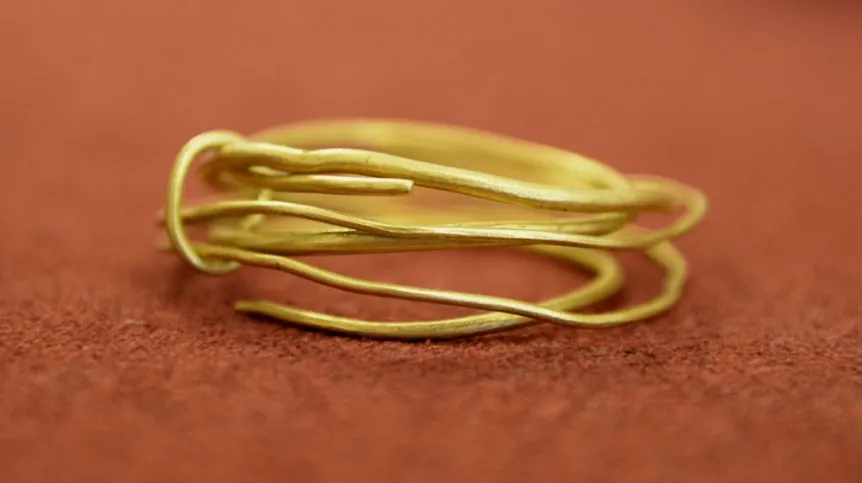
Gold items preliminarily dated to 1600-400 BC have been discovered by a farmer near Jasło in the Subcarpathia. Antique objects have been transferred to the Subcarpathian Museum in Krosno.
"During field work near Jasło, a farmer found three gold bracelets tied with golden wire" - told PAP archaeologist and Krosno museum director Jan Gancarski.
The archaeologist said that "the finder acted very honestly and informed the conservation services, which in turn transferred the finds to the museum in Krosno". "His attitude is commendable. I hope that he will receive an adequate award from the Minister of Culture and National Heritage" - added Gancarski.
Director declined to reveal personal details of the finder and the place where the gold bracelets rested for several thousands of years. He also did not want to reveal the weight of the gold bracelets. Archaeologists from the Subcarpathian Museum intend to carry out a detailed study of the place of discovery.
"These are unique monuments; probably the only of their kind in south-eastern Poland. We will study the place of discovery because we want to determine whether it was a discovery of a treasure, or perhaps remains of a burial ground" - noted Gancarski.
In his opinion, "the objects probably originated from behind the Carpathians". "At the time, the Carpathian foothills were inhabited by people who came here from behind the Carpathians" - he said.
In the 1990s in the area of Jasło, Gancarski and his team discovered more than 160 thousand historical artefacts and objects; the oldest date back to four thousand years before Christ.
It was then established that in the beginning of the Bronze Age a fortified settlement had been built in Trzcinica near Jasło. It was surrounded by an embankment with a palisade. In the years 2000-1650 before Christ it was inhabited by the population of the Pleszów group of the Mierzanowice culture, which remained under the strong Transcarpathian influence.
On the other hand, between 1650 and the year 1350 before Christ the area was inhabited by Transcarpathian population of the Ottomány culture with a high level of civilization. Between the eighth and eleventh centuries, Trzcinica was the central stronghold of one of the tribes living in Małopolska at the time. It was probably destroyed in the fire at the end of the reign of Mieszko II.
Archaeological open-air museum opened in Trzcinica several years ago.
PAP - Science and Scholarship in Poland
kyc/ pz/ mrt/
tr. RL













